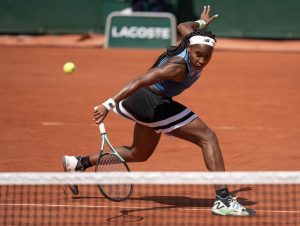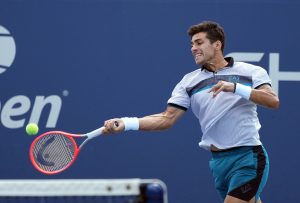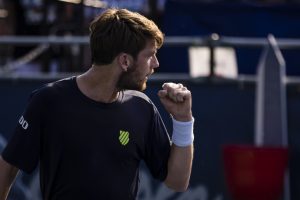One player who was at the receiving end of close attention at the Western & Southern Open in Cincinnati was Stefanos Tsitsipas. After all, he had come into the tournament barely more than a day after he had reached the final of the Rogers Cup this past Sunday.
Tsitsipas’ decision to play in Cincinnati seemed both bemusing and amazing. The former because it seemed illogical that he would want to follow up on the momentousness of Toronto immediately, thereby increasing the possibility of him suffering a burnout at the US Open. And the latter because it reinforced his maturity showing his commitment towards the tournament and to the sport as well.
As expected, then, Tsitsipas’ journey in Cincinnati was quite a short affair, with the 11th seed David Goffin ousting him in the first round, 7-5 6-3. To the skeptics, who had been against him playing Cincinnati from the outset, this felt like vindication. But there was a bigger picture that was left behind and ought to have been the primary subject of focus vis-à-vis the 20-year-old.
To begin with, understand that as someone who is still making his way in the deeper cut-and-thrust of the sport playing two consecutive tournaments is merely par for the course.
More so, since Tsitsipas went on to become an unexpected finalist at the Rogers Cup, notching upset after upset along the way, it brought additional scrutiny upon him as a contender for titles and Majors in the future. But it also conveniently ignored the fact that champions are expected to be consistent across tournaments and across seasons. And consistency, while easy to describe and talk about, isn’t that easy to achieve.
This aspect of consistency notwithstanding, the predictions and expectations around him have become indelible by now. So much so that the future which has been talked about is nearer than an unknown later date, i.e. the US Open. It is, then, expected that Tsitsipas would come out flying off the blocks at Flushing Meadows, thereby living up to the premise that the era of the NextGen players has finally dawned at the Grand Slams.
It’s not the first time that such high hopes have been pinned on youngsters. The template is repetitive after having enveloped the likes of Bernard Tomic, Nick Kyrgios, Dominic Thiem, and in the last couple of years, names like Borna Coric–but with the spotlight firmly centered upon Alexander Zverev currently.
In an ironic representation of consistency, this has also been a factor that has had tougher implications upon the players themselves. While many have struggled to tread on the routes flatteringly laid out for them, several have also had startling ups and downs. Case in point: Zverev.
Thus, while Zverev continues to be the flagbearer to throw off the oligopoly of the players of the older generations, it’s still difficult to pinpoint when and where he would get to achieve this much-emphasised objective.
It’s often said history repeats itself. And it’s said that history offers myriad learning opportunities. Then, if recent history is anything to go by, plotting Stefanos Tsitsipas’ course is the last thing that should be on the cards. For, if anything, this is just the beginning for him and what he needs to do on his own is to learn to map the roads for himself. Going by his own words, then, “It never gets easier. You just get better.”
Even if it means a player has to accept more losses than wins early on in back-to-back tournaments, instead of bypassing them entirely.
Main Photo:
Embed from Getty Images






